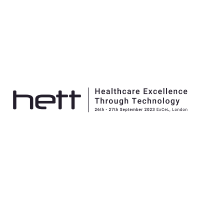Written by: Paul McGinness, CEO of Lenus Health
Winters have always been challenging for healthcare providers due to the rise in respiratory illnesses, but most diseases are chronic rather than acute meaning many winter admissions can be avoided with the right clinical tools in place.
In the UK, over 17 million people live with chronic conditions. They contribute significantly to emergency admissions and currently account for 70% of inpatient bed occupancy. Using predictive analytics alongside digital tools to address the growing burden of chronic conditions can be the transformative approach we need while saving lives this winter. Here’s how.
Keeping urgent care demand in check
NHS England recently announced a £150m capital fund for trusts that outperform on emergency care targets. However, last winter's grim statistics, which attributed around 500 deaths per week to extended A&E waiting times, demonstrate the need for providers to take immediate action to ensure these targets are reached.
Although the NHS has expanded its bed capacity in the community with virtual wards, hospital bed occupancy has remained high year round. Predictive analytics is a type of artificial intelligence that analyses data to predict future outcomes. Utilising this type of artificial intelligence to help care teams manage patients with chronic conditions can help proactively target earlier interventions.
For example, accessible and clinically actionable data insights surfaced by Lenus Health technology can allow pharmacists funded to work in primary care to optimise structured medication reviews, which in some cases will prevent a downstream hospital admission by a patient with decompensated disease. This approach isn't about spending more but targeting limited care resources at patients that need it most.
But AI's capabilities aren't confined to flagging patients at high risk. Predictive analytics can also help identify patients whose risk has reduced, which in turn can lead to reduced medication benefitting both the patient's well-being and generating cost savings for the NHS.
In the run up to winter, we are at a tipping point where predictive analytics can be deployed safely into live point of care clinical workflows, as achieved by one of the UK’s largest healthcare systems, NHS Greater Glasgow and Clyde. Over the last years, we have led extensive co-design efforts with patients and clinicians to develop a technically viable and clinically explainable way of delivering machine learning derived risk scores into existing care pathways.
Leveraging the power of predictive analytics to address the growing burden of chronic conditions can be the transformative approach we need, enabling early diagnosis, personalised treatment, and greater access to guideline-directed medical therapy.
Making the most of virtual wards
In anticipation of another challenging winter, significant efforts continue to rapidly scale and evidence virtual wards to keep hospital bed occupancy at safe levels. However, it is essential to consider how this investment in virtual wards will dovetail with existing services and pathways to fully build their value case.
One of the most common and costly conditions that leads to hospital admissions is chronic obstructive pulmonary disease (COPD). COPD is the second leading cause of hospitalisation in the UK, accounting for one in eight emergency admissions, many of which are preventable. A recent trial in the NHS, called RECEIVER showed that using digital tools to support patients beyond virtual wards significantly reduced COPD admissions and bed days by half.
While virtual wards can increase capacity keeping bed occupancy in check, they are not a magic bullet for winter pressures. Regular reviews of chronic condition patients in primary care are suffering due to resource constraints, which in turn is driving high rates of hospital re-admission in patients with decompensated disease. Specialist care teams need data insights to identify the highest risk patients and digital tools to manage interventions and coordinate care.
This winter, there is the real possibility of higher than usual levels of respiratory illness including Covid, flu and RSV. Australia, whose activity often predicts what the NHS is likely to see in winter, is experiencing one of the biggest flu seasons on record. Using predictive analytics to provide critical care delivery insights with the right digital tools in the right context can help protect patients at risk of hospital admissions, not only during their stay in virtual wards, but also after they are discharged. This winter, more than ever, prevention is better than cure.
Discuss winter proofing your patients at HETT 2023
With another demanding winter on the horizon, access to predictive AI and digital tools are more vital than ever. By harnessing the power of AI and technology for chronic conditions, we can enhance care delivery, prevent unnecessary admissions, and make significant strides towards a more resilient NHS in winter and beyond. Given NHSE’s capital fund to reward trusts that excel in emergency care targets, there is no better time to adopt advanced digital solutions.
This HETT, discuss winter-proofing your patients using predictive analytics with Lenus Health’s Lead Data Scientist, Dr Shane Burns. Visit us on stand D54 or book a meeting directly via HETT Connect.
%20(1).png?width=500&height=58&name=HETT%20insights%20logo%20RGB-04%20(1)%20(1).png)


